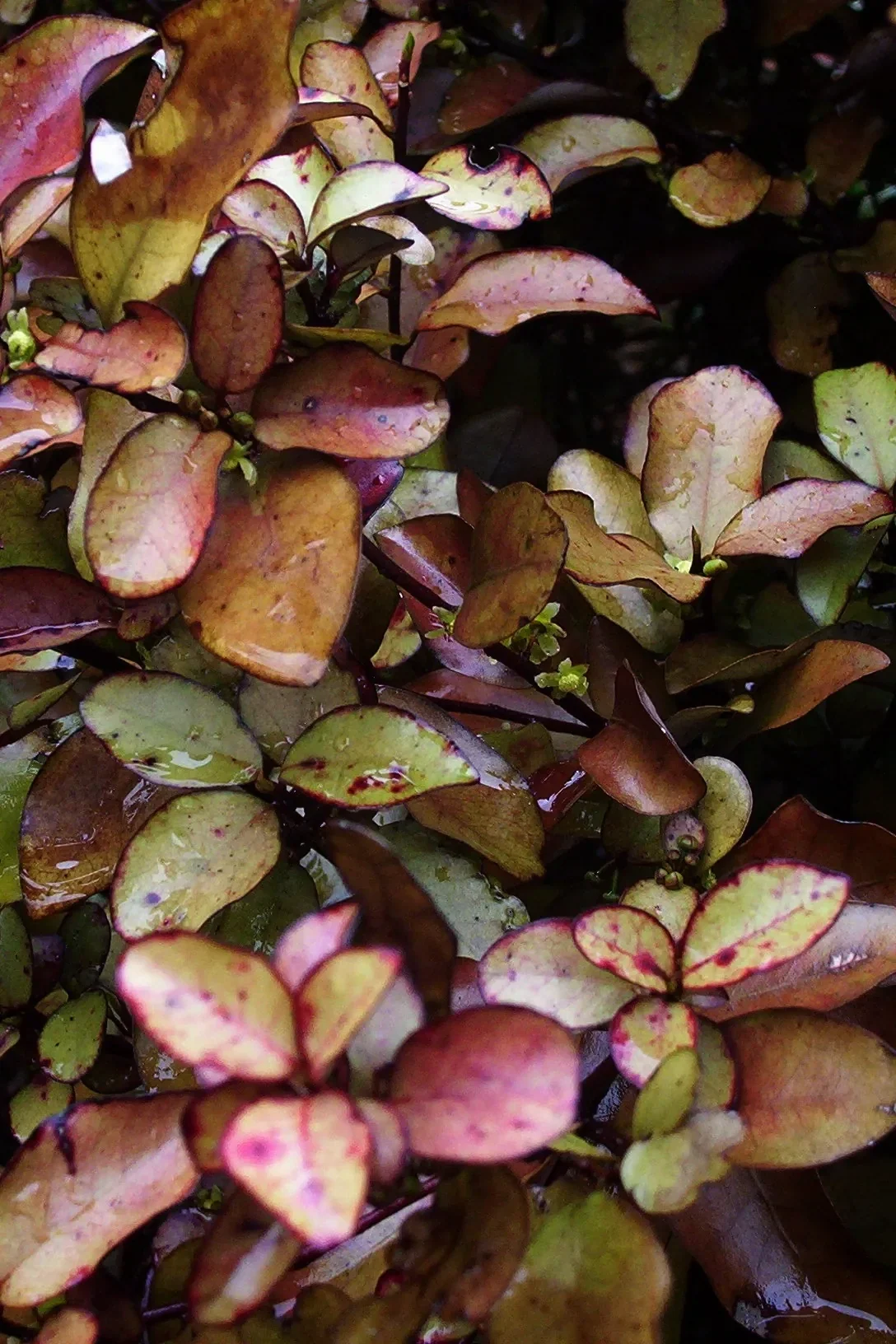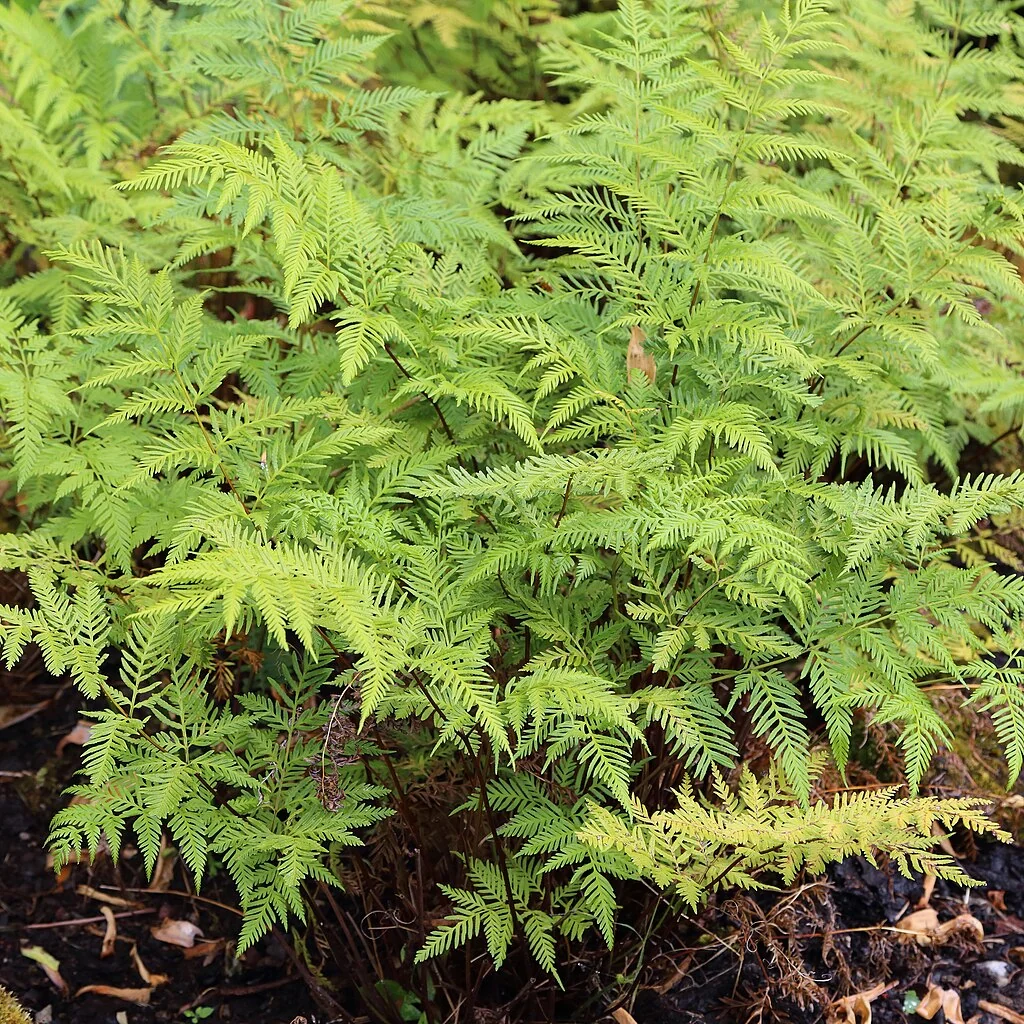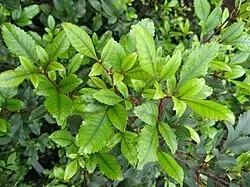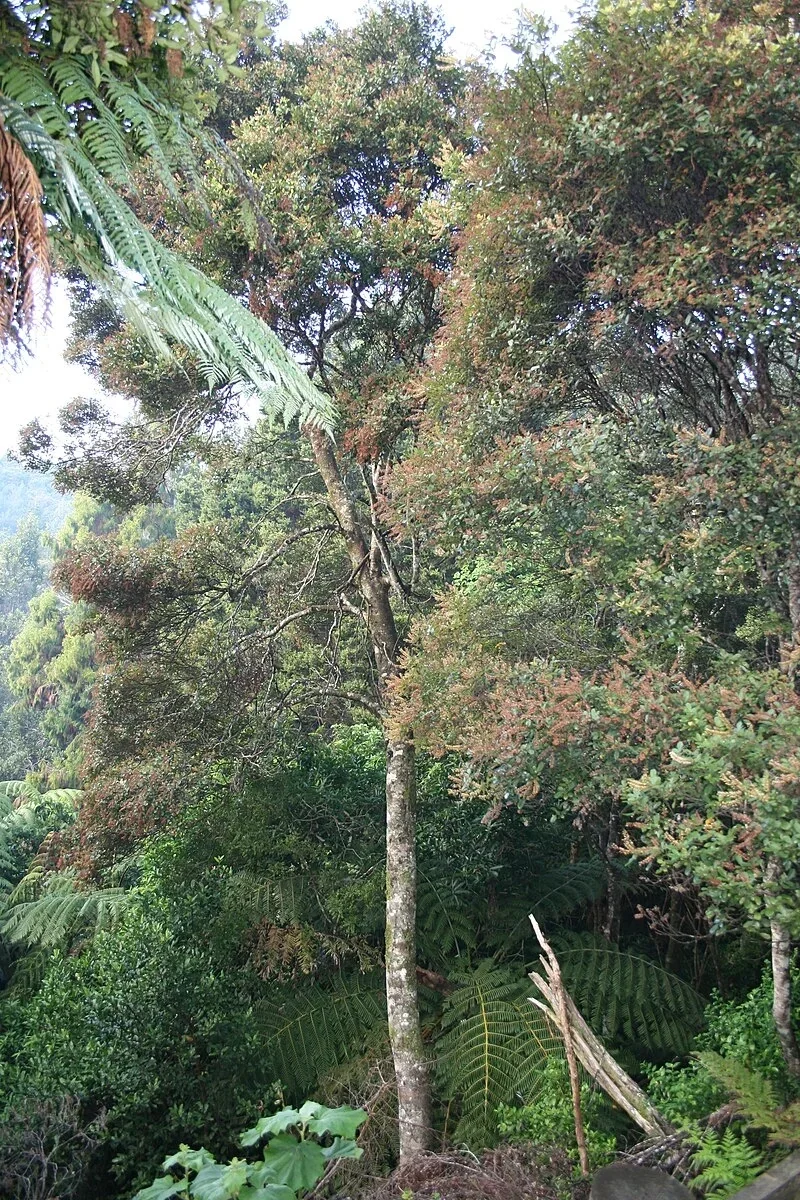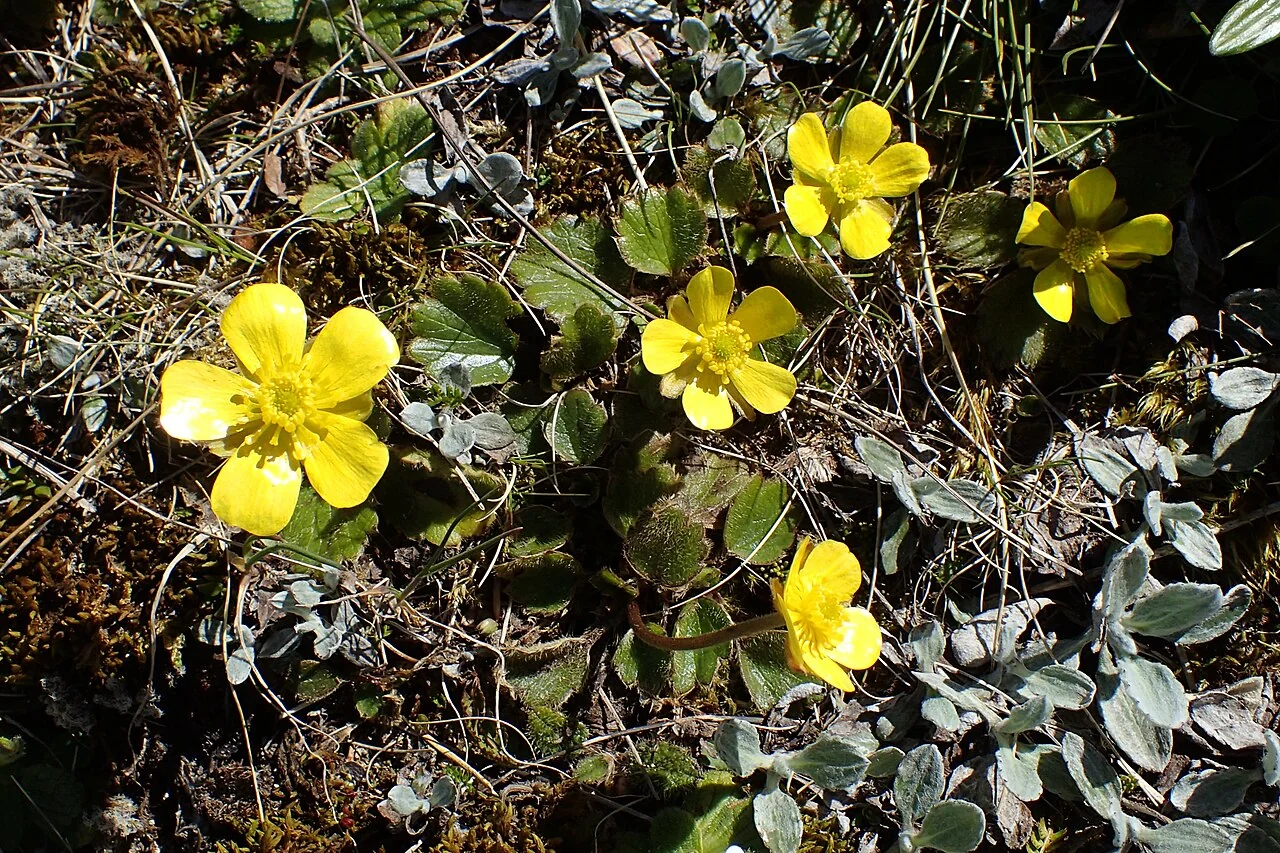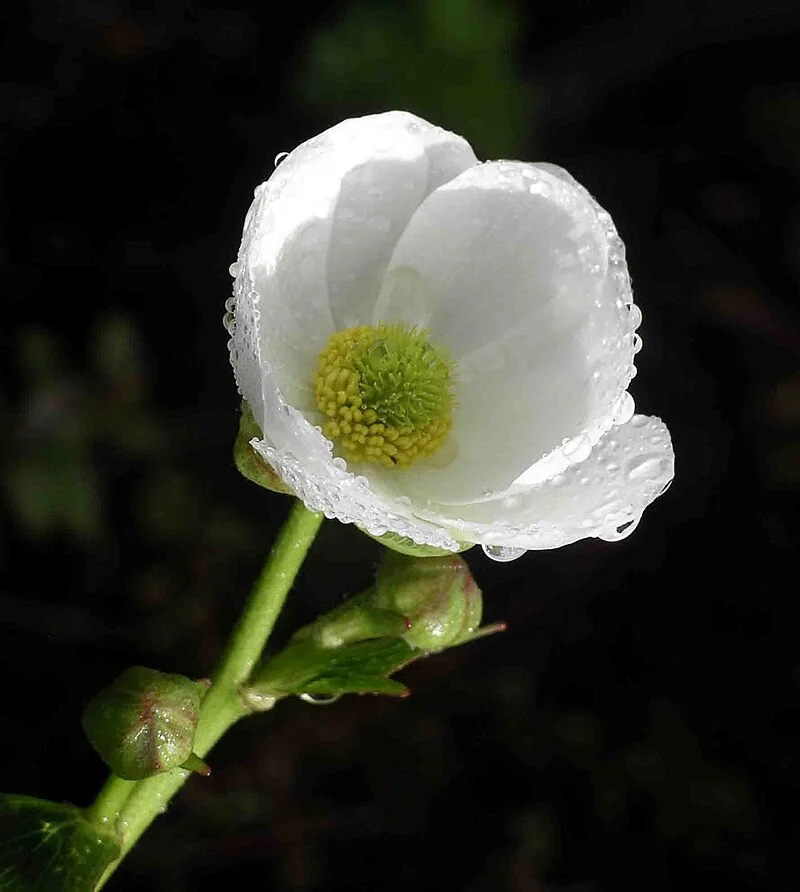
Lowland Horopito
Pseudowintera axillaris
This native plant, known as Lowland Horopito (scientific name: Pseudowintera axillaris), is a remarkable species endemic to New Zealand. It is characterized by its unique features, ecological role, and cultural significance. This comprehensive guide provides detailed information on its care, propagation, and importance within the New Zealand ecosystem. Understanding this plant contributes to the appreciation of our rich biodiversity and heritage. native trees

Plant Description
Botanical Features
Lowland Horopito (Pseudowintera axillaris) is a shrub or small tree endemic to New Zealand. It can grow up to 7-8 meters tall with upright trunks and branches, and dark bark and branchlets. The plant is glabrous, meaning it is hairless. Its leaves are a distinguishing feature: they are alternate, pungent, glossy, and dark green to yellowish-green on the upper surface, typically without blemishes or blotches. The undersides are pale to glaucous but not white, with a pale, conspicuous midvein. Adult leaves measure 6-10 cm long by 3-6 cm wide, with smooth or undulate margins and slender, dark reddish-brown petioles about 2 cm long. Juvenile leaves have distinctive white, net-like secondary veins on their upper surface. When chewed, the leaves have a slight, pleasant peppery taste, which helps deter grazing insects. The flowers are bisexual, greenish-yellow, and approximately 1 cm in diameter. They appear in axillary clusters of 1-5 (sometimes up to 10) on slender pedicels 5-10 mm long. The corolla consists of 5-6 free petals, each 5-6 mm long, narrow-oblong to narrow-obovate, with an obtuse apex. The plant produces fleshy, globose to subglobose berries, 5-6 mm in diameter, which are orange to orange-red when ripe and contain 3-6 seeds.
Quick Facts
| Scientific Name | Pseudowintera axillaris |
|---|---|
| Height | 15-20 m |
| Spread | 3-5 m |
| Water Needs | Moderate |
| Light | Full sun to part shade |
| Frost Tolerance | Moderate |
| Salt Tolerance | Moderate |
| Growth Rate | Medium |
| Lifespan | Long |
Climate Best Suited to
Lowland Horopito (Pseudowintera axillaris) is primarily found in lowland to hilly forests across the North Island of New Zealand, extending to the Marlborough Sounds in the South Island. It demonstrates good adaptability to various conditions, thriving in areas with well-drained soils and tolerating both full sun and partial shade. Its natural distribution suggests a preference for warmer, more humid environments but with a reasonable tolerance for cooler temperatures found in its southern range.
Regional Suitability
| City | Climate Suitability |
|---|---|
| Whangārei | Ideal |
| Auckland | Ideal |
| Hamilton | Ideal |
| Tauranga | Ideal |
| Rotorua | Ideal |
| Gisborne | Ideal |
| New Plymouth | Ideal |
| Napier | Ideal |
| Whanganui | Ideal |
| Palmerston North | Ideal |
| Wellington | Ideal |
| Nelson | Ideal |
| Christchurch | Ideal |
| Dunedin | Moderate |
| Invercargill | Moderate |
Natural Habitat
Lowland Horopito (Pseudowintera axillaris) is a shrub-like tree endemic to New Zealand, found in both the North and South Islands. Its natural habitat primarily consists of lowland and lower montane forests, where it thrives in shaded, damp, and cold locations.
Key Habitats Include:
- Lowland and Lower Montane Forests: It is a common component of these forest types, typically growing up to about 700 meters in elevation, though it has been recorded at 1000 meters.
- Shaded and Damp Locations: Pseudowintera axillaris is a shade-loving plant, preferring damp and cold locations within these forests. This distinguishes it from its close relative, Pseudowintera colorata, which prefers areas with higher light.
- Specific Distribution: Its range extends from Kaitaia in the north down to the Marlborough Sounds and the northwest of the South Island. It is particularly common just south of Auckland, especially in the Waitakere region.
The presence of Pseudowintera axillaris in these specific habitats underscores its ecological importance in contributing to the biodiversity and structural complexity of New Zealand's native forest understories.
Plant Conservation
Conservation
Pseudowintera axillaris, commonly known as lowland horopito or lowland pepper tree, is a plant species endemic to New Zealand. It is currently classified as "Not Threatened" by the New Zealand Threat Classification System (NZTCS), a status it has held in assessments from 2004, 2009, 2012, and 2017. Its pungent, peppery taste deters most herbivorous animals and insects, contributing to its stable population. Despite its "Not Threatened" status, Pseudowintera axillaris faces some ecological challenges: invasive species like Griselinia lucida can compete for resources, the parasitic plant Dactylanthus taylorii can exploit its roots, and possums are known to damage native forests by consuming leaves, buds, and fruits. There is also a need for further research into its propagation techniques, as information on its viability, germination, and vegetative propagation is limited, and the species exhibits high rates of self-sterility.
Growing Requirements
Soil Requirements
Lowland Horopito (Pseudowintera axillaris) is remarkably adaptable to different soil conditions, thriving in well-drained environments. It can tolerate a variety of soil types, from sandy to loamy, and prefers a neutral to slightly acidic pH. Good drainage is crucial to prevent root rot, ensuring healthy growth and development.
- Tolerates a wide range of soil types from clay to sandy
- Prefers well-draining soils but can handle occasional waterlogging
- Thrives in moderately fertile soils but will grow in poor soils too
- Can tolerate slightly acidic to slightly alkaline pH
- Handles coastal conditions including salt spray
Light Requirements
Lowland Horopito (Pseudowintera axillaris) thrives in a variety of light conditions, from full sun to partial shade. Optimal growth and flowering are typically achieved in locations receiving ample sunlight throughout the day. However, it can also tolerate some shade, especially in hotter climates, where it benefits from protection during the most intense afternoon sun.
- Full sun for optimal growth and form
- Can tolerate partial shade but may develop a leggier form
- At least 6 hours of direct sunlight daily is ideal
- Northern or eastern exposures work well in garden settings
Water Requirements
Once established, Lowland Horopito (Pseudowintera axillaris) is remarkably drought-tolerant, requiring minimal supplemental watering. During its establishment phase, consistent moisture is crucial to encourage strong root development. Mature plants can withstand dry periods, but regular watering during prolonged droughts will promote healthier growth and more abundant flowering.
- Moderate watering during establishment (first 1-2 years)
- Drought-tolerant once established
- Can handle periods of soil saturation
- Reduce watering in winter when growth slows
- Signs of overwatering include yellowing leaves and crown rot
Planting Guide
Plant in part shade to filtered sun with free-draining soil. Avoid hottest afternoon sun in inland sites. Water to establish, then moderate moisture suits best.
- Soil: Well-drained, humus-rich; avoid waterlogging.
- Spacing: 1-2 m depending on mature size and screening needs.
- Mulch: Leafy mulch to conserve moisture and feed soil life.
Ecosystem Notes
- Understorey role: Evergreen cover and aromatic foliage in damp forest margins.
- Associates: With nikau, tree ferns, and broadleaf species in lowland forest.
- Fauna: Provides shelter and seasonal resources for insects and birds.
Uses and Significance
Garden Uses
- Specimen tree for visual impact
- Suitable for native gardens and restoration projects
- Enhances native garden aesthetics and biodiversity
- Provides architectural accent with its unique structure
- Effective for erosion control on slopes and banks
Landscaping Ideas
- Shade shrub: Great for dappled light with glossy, aromatic foliage.
- Coastal shelter: Suits mild, moist coastal gardens out of harsh wind.
- Native understory: Pair with ferns and Coprosma for layered plantings.
Seasonal Care Calendar
Spring
In spring, Lowland Horopito (Pseudowintera axillaris) begins its active growth phase. New foliage emerges, and it's an ideal time for planting new specimens or propagating. Ensure adequate moisture and monitor for early signs of pests.
- New growth begins with fresh foliage development
- Apply a balanced, slow-release fertilizer if desired
- Excellent time for planting new specimens or dividing offsets
- Monitor for new pest activity and address promptly
Summer
Summer is the peak growing season for Lowland Horopito (Pseudowintera axillaris), often accompanied by flowering. Consistent watering is important, especially for young plants, to support vigorous growth and prevent stress during dry periods.
- Flowering typically occurs in early to mid-summer (November-January)
- Water young trees regularly during extended dry periods
- Avoid heavy pruning during the active growing season
Autumn
During autumn, Lowland Horopito (Pseudowintera axillaris) prepares for the cooler months. Fruits or berries develop, providing food for native birds. It's also a good time for planting and general garden cleanup.
- Fruits or berries develop and ripen (December-February), attracting birds
- Natural leaf shedding occurs as part of its growth cycle
- Good time for planting new specimens to establish before winter
- Clean up fallen leaves if a tidy appearance is desired
Winter
Winter is generally a dormant period for Lowland Horopito (Pseudowintera axillaris). Minimal care is required, though young plants may benefit from protection in colder regions. This is an opportune time for any necessary structural pruning.
- Generally dormant with minimal growth activity
- No special winter protection needed in most mild climates
- Suitable time for structural pruning if required
- Fallen leaves can be left as mulch or removed for tidiness
When to Prune and How Much
Lowland Horopito (Pseudowintera axillaris) generally requires minimal pruning to maintain its natural form and health. Pruning should focus on removing dead or damaged growth and shaping the plant as needed.
- Remove dead, damaged, or diseased branches at any time of year
- Light formative pruning when young helps establish good structure
- To create a multi-trunked specimen, cut the main stem to encourage branching
- Fallen leaves can be removed for a tidier appearance, or left as natural mulch
- If necessary, lower branches can be removed to create clearance underneath
- Major pruning is best done in late winter to early spring before new growth
Always use clean, sharp tools for pruning to minimize the risk of disease and ensure clean cuts. The plant often responds well to pruning with vigorous new growth, contributing to a fuller, healthier appearance.
How to Grow Lowland Horopito
From Seed
Propagating Lowland Horopito (Pseudowintera axillaris) from seed is a rewarding process, though it requires patience. Start by collecting seeds from the ripe, dark berries in autumn. Clean the flesh from the seeds before sowing. Sow the seeds in a deep seed tray filled with a well-draining seed-raising mix. Cover them lightly with about 5mm of the mix or fine gravel. Water the tray gently and place it in a warm, sheltered spot with bright, indirect sunlight. Germination can be slow, taking several months. It is crucial to maintain consistent moisture levels without waterlogging the soil. Once the seedlings are large enough to handle, carefully prick them out into individual pots. Use a deep pot to accommodate the plant's developing taproot. Grow them on for a year or two before planting them in their final position.
From Cuttings
Lowland Horopito can also be grown from semi-hardwood cuttings, which is a faster method than growing from seed and ensures the new plant is true to the parent. Take cuttings in late summer or early autumn from healthy, vigorous shoots of the current season's growth. Cuttings should be about 10-15cm long and taken from a node. Remove the leaves from the lower half of the cutting to reduce water loss and dip the base in a rooting hormone to encourage root development. Insert the cuttings into a container filled with a free-draining potting mix. Place the container in a warm, humid environment, like a propagator or under a clear plastic bag, to maintain high humidity. Keep the mix moist but not waterlogged. Roots should form within a few months. Once the cuttings have a well-developed root system, they can be potted on into larger containers and grown until they are robust enough to be planted out in the garden.
Planting
When planting your Lowland Horopito, choose a site with well-drained soil and a sunny or partially shaded aspect. While it is adaptable to a range of conditions, it thrives in a cooler, moist root run. Before planting, prepare the site by digging a hole that is twice the width of the root ball and just as deep. Gently tease out the roots of the plant to encourage them to grow outwards into the surrounding soil. Place the plant in the hole, ensuring that it is at the same depth as it was in the pot. Backfill with soil and firm it down gently. Water the plant thoroughly after planting to settle the soil and eliminate any air pockets. It is important to keep the soil moist, especially during dry periods, until the plant is well-established. Applying a layer of organic mulch around the base of the plant will help to retain moisture, suppress weeds, and provide nutrients as it breaks down.
Pests and Diseases
- Root issues: Poor drainage leads to decline; improve soil and avoid soggy sites.
- Scale/sooty mould: Treat with oils; thin congested growth to increase airflow.
- Leaf scorch: Protect from hot, dry winds and harsh afternoon sun.
Cultural Significance
Cultural Importance
Horopito Uses
Horopito's pungent leaves have long been used in rongoā Māori and now feature in modern "bush pepper" cuisine. Including it in māra rongoā highlights native spice and healing traditions.
Pseudowintera axillaris, also known as lowland horopito, holds cultural significance primarily among Māori and early European settlers in New Zealand. Māori traditionally used the leaves of Pseudowintera axillaris (and the closely related P. colorata) to create a decoction for various ailments, including as a stimulant, for stomach aches, and for skin and venereal diseases. Bruised leaves steeped in water were applied to the skin, and an internal decoction was known as "Māori painkiller" or "bushman's painkiller" for stomach aches. Chewed leaves were also used for toothaches. Early European settlers adopted some of these uses, employing the bark as a quinine substitute and the sap to treat skin diseases and gonorrhea. Māori also held a spiritual belief that the leaves of horopito were worn by the souls of the dead on their journey to and within the afterlife. The dark-red wood from Pseudowintera species has been utilized by woodworkers for decorative items such as carvings and inlaying. While the spicy flavor of the leaves was known to Māori, it's unclear if it was actively used in cooking. However, it was used for other purposes, including weaning children off breastfeeding due to its peppery taste.
Bonus Tip
For denser form, tip-prune lightly after new growth hardens; avoid heavy cuts which can leave bare stems in the shade.
